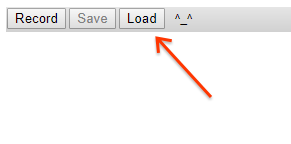Change-Id: I099f8a635df7dd0ddd3902459615250ea2c120c5 Reviewed-on: https://skia-review.googlesource.com/c/skia/+/209874 Commit-Queue: Mike Klein <mtklein@google.com> Reviewed-by: Mike Klein <mtklein@google.com>
4.1 KiB
Tracing Skia Execution
Introduction
Skia is instrumented to provide execution traces in several ways. Within Chrome, Skia is traced with the standard tracing interface, along with the rest of Chromium. In the Android framework, Skia's tracing is integrated into atrace.
For standalone builds, Skia's tools (DM, nanobench, and Viewer) are capable of tracing execution
in three ways, controlled by the --trace command line argument.
Standalone Tracing
Most arguments to --trace will be interpreted as a filename (the two exceptions are described
below), and trace events will be written to that file in JSON format, suitable for viewing with
chrome://tracing.
# Run DM on several GMs to get tracing data
out/Release/dm --config gl --match bleed --trace gl_bleed_gms.json
This creates a file gl_bleed_gms.json in the current directory. There are limitations in Chrome's
tracing tool that prevent loading a file larger than 256 MB. To stay under that limit (and avoid
clutter and slowdown in the interface), it's best to run a small number of tests/benchmarks when
tracing. Once you have generated a file in this way, go to
chrome://tracing, click Load:
... then select the JSON file. The data will be loaded and can be navigated/inspected using the tracing tools. Tip: press '?' for a help screen explaining the available keyboard and mouse controls.
Android ATrace
Running any tool with --trace atrace on an Android device will cause the application to forward
tracing information to atrace. On other
platforms, this has no effect.
If you run systrace from the host command line, you will need to supply -a <app_name>,
and the <app_name> argument will need to exactly match the command line used on the target
device. For example, if you use adb shell "cd /data/local/tmp; ./nanobench --trace atrace ..."
you must pass -a ./nanobench or systrace will ignore events from the application.
Console Logging
For simple situations, all tracing events can be directed to the console with --trace debugf:
# Run DM on a single GM with SkDebugf tracing
out/Release/dm --config gl --match ^gamma$ --trace debugf
[ 0] <skia.gpu> GrDrawingManager::internalFlush id=1 #0 {
[ 0] } GrDrawingManager::internalFlush
[ 0] <skia.gpu> GrGpu::createTexture id=1 #1 {
[ 0] } GrGpu::createTexture
[ 0] <skia.gpu> GrRenderTargetContext::discard id=1 #2 {
[ 0] } GrRenderTargetContext::discard
[ 0] <skia.gpu> SkGpuDevice::clearAll id=1 #3 {
[ 1] <skia.gpu> GrRenderTargetContext::clear id=1 #4 {
[ 1] } GrRenderTargetContext::clear
[ 0] } SkGpuDevice::clearAll
[ 0] <skia> SkCanvas::drawRect() #5 {
[ 1] <skia.gpu> SkGpuDevice::drawRect id=1 #6 {
[ 2] <skia.gpu> GrRenderTargetContext::drawRect id=1 #7 {
[ 3] <skia.gpu> GrRenderTargetContext::addDrawOp id=1 #8 {
[ 3] } GrRenderTargetContext::addDrawOp
[ 2] } GrRenderTargetContext::drawRect
[ 1] } SkGpuDevice::drawRect
[ 0] } SkCanvas::drawRect()
...
Adding More Trace Events
Adding more trace events involves using a set of TRACE_ macros. The simplest example, to record
the time spent in a function or other scope, is:
#include "SkTraceEvent.h"
...
void doSomething() {
// Add an event for the duration of the current function (or other scope)
// "skia" is a category name, for filtering events while recording
// TRACE_FUNC is the event name, and expands to the name of the current function
TRACE_EVENT0("skia", TRACE_FUNC);
if (doExtraWork) {
TRACE_EVENT0("skia", "ExtraWorkBeingDone");
...
}
}
For more examples, including other kinds of trace events and attaching parameters to events, see the comments in SkTraceEventCommon.h.

